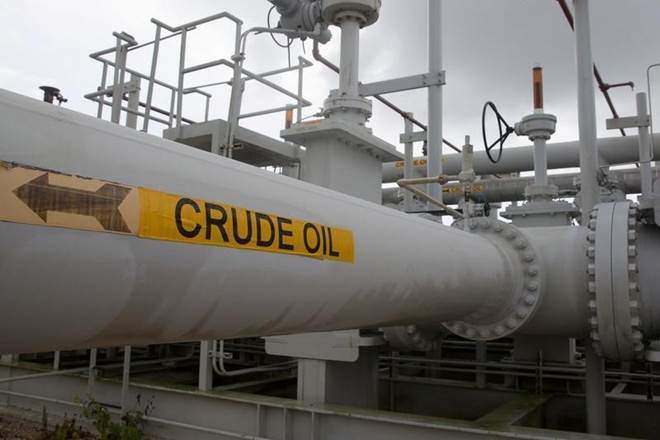(Market Watch) Oil prices rose Friday, with Brent crude trading close to the $80-a-barrel threshold, in anticipation of renewed U.S. economic sanctions on Iran.
July Brent crude LCON8, +0.64% rose 30 cents, or 0.4%, at $79.60 a barrel on ICE Futures Europe, after tapping a high of $80.50. Prices haven’t seen levels this high since November 2014. On the New York Mercantile Exchange, June West Texas Intermediate crude CLM8, +0.04% the U.S. benchmark, edged up by 6 cents, or 0.1%, to $71.56 a barrel, holding at a 3½ year high.
President Donald Trump last week pulled the U.S. out of a 2015 international agreement to curb Iran’s nuclear program, setting the stage to reinstate sanctions on the Islamic Republic, a member of the Organization of the Petroleum Exporting Countries.
Even though the European Union has decided to stick to the accord, energy companies in the region have already started to pull back from Iran. On Wednesday, French oil giant Total SA TOT, +1.23% said it would withdraw from an agreement to help develop a gas field off Iran if it wasn’t granted a waiver by the U.S. Total had signed a $1 billion deal to develop Iran’s South Pars field.
The decision was a concrete sign that U.S. sanctions could hinder Iran’s oil industry and further reduce global supply. Iran currently exports around 2.4 million barrels a day of crude. Analysts estimated that anywhere between 400,000 to a 1 million barrels could be at risk once sanctions are fully reinstated in six months.
The move by Total “confirmed that European companies with business and banking activities in the U.S. cannot afford to go up against the U.S. Iran sanctions unless they get assurances against possible secondary sanctions for their U.S. activities,” said Bjarne Schieldrop, chief commodities analyst at SEB Markets.
Concerns over Iranian supply come amid an increasingly tight oil market. The International Energy Agency on Wednesday said commercial petroleum stocks in Organization for Economic Cooperation and Development countries fell to the lowest level in three years, and below a closely watched five-year average metric for the first time since 2014.
In its monthly oil-market report, the IEA suggested the drawdown in stocks was evidence that OPEC’s coordinated efforts to cut output have succeeded in clearing up a global supply glut that had weighed on the market since late 2014.
OPEC and 10 producers outside the cartel, including Russia, have been holding back crude production by around 1.8 million barrels a day since the start of last year. The agreement, which was extended in November, is set to expire at the end of 2018.
On Thursday, Saudi Arabia—the de facto head of OPEC and the world’s largest crude exporter—said it was in talks with other OPEC members and Russia over “recent market volatility,” amid concerns prices are rising too high.
Oil market observers will also be looking ahead to elections this weekend in Venezuela, where ongoing supply outages have already helped to bolster prices in recent months. “Incumbent President Nicolás Maduro is a shoo-in to win and this might provoke the wrath of Washington which is actively mulling over broad oil sanctions on Venezuela,” said Stephen Brennock, analyst at brokerage PVM Oil Associates Ltd.
“Against this backdrop,” he added, “the odds are on further price upside with calls for $100 oil growing by the day.”
U.S. shale producers, meanwhile, have increased investment in production but are facing their own profit challenges. Permian Basin oil is selling at the steepest discount to benchmark U.S. prices in 3½ years, after production there surged to a record of around 3.2 million barrels a day.
Among refined products, Nymex reformulated gasoline blendstock—the benchmark gasoline contract—was down 0.30% at $2.24 a gallon. ICE gas oil, a benchmark for diesel fuel, changed hands at $699.50 a metric ton, down 0.67% from the previous settlement.
Back on Nymex, June gasoline RBM8, +0.73% rose 0.6% to $2.2559 a gallon, while June heating oil HOM8, +0.55% rose 0.4% to $2.29 a gallon.
Natural-gas prices, meanwhile, ended higher. An EIA report Thursday revealed a weekly rise in U.S. supplies of the commodity that was generally in line with market expectations.
June natural gas NGM18, -0.38% slipped 0.1% to $2.8579 per British thermal units.
Domestic supplies of natural gas rose by 106 billion cubic feet for the week ended May 11, the EIA said. Analysts surveyed by S&P Global Platts had forecast a climb of 104 billion cubic feet and on average over the last five years for the same week, inventories rose by 67 billion cubic feet.



